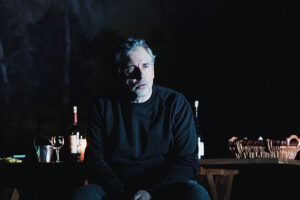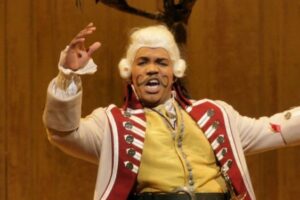

Having spent the better part of a year of my life making sure it came out that way, I was also gratified to read Mr. Mack’s description of the recording as “vividly theatrical”. This was before the days of homevideo, so my objective was to create a sonic theater of the mind, picking up where John Culshaw had left off with his production of the Solti Ring.
As Mr. Mack states, Carmen was indeed recorded in multi-track technology (16 tracks on two-inch Scotch 202 tape, to be exact), enabling us to produce the theatrical effects in post-production, rather than attempting to execute them live at the recording sessions. After editing—592 splices, made with a fantastic, serrated, tape-guillotine invented in the DG laboratories—I spent about three months in mixing the edited 16-track masters down to 2-track stereo for LP release and, simultaneously, to 4-track surround sound in the hope that someday there would be a technically sufficient surround home-playback system. Forty years later, with contemporary digital technology, there is.
Mr. Mack also gives an excellent account of the circumstances surrounding the production, which is completely accurate but for two small points. He writes, “Bernstein’s label Deutsche Grammophon… decided to absorb the massive costs of recording anything in the United States and commit the production to disc” and “DG was unable to meet the financial demands of the Metropolitan Opera Chorus so a pickup group was engaged and named The Manhattan Opera Chorus.”
Firstly, in 1972, Bernstein was near the end of a long-term contract with Columbia Records. Up until then, he had not recorded for any other label, to my knowledge, for at least fifteen years, so DG was not “Bernstein’s label” at that point. However, although his Columbia contract was exclusive, it gave him the right to record for another label if Columbia refused to record a particular project which he wanted to do, and early in that year, Columbia looked at the quarter-million-dollar tab for recording Carmen in September and said no thanks. That was how DG came into the picture.
My boss from Hamburg, Hans Hirsch, and I met with Lenny and his manager and lawyer at the Watergate Hotel on June 17, 1972 and negotiated the terms of his contract to do Carmen, which later served as the basis for his long-term contract with Deutsche Grammophon. (A couple days after this meeting at the Watergate we read in the newspaper that there had been a little burglary there that weekend!)
Secondly, concerning The Manhattan Opera Chorus—it was used because the Met was having a labor dispute with its own chorus at that time, not because DG was backing away from the cost of the Met Chorus. The Met management told us that we would not be permitted to use their chorus, so we got the well-known and highly respected choral contractor, Thomas Pyle, to put together a chorus of freelancers for us, and he gave it the name of The Manhattan Opera Chorus.
This actually cost DG twice as much as we would have paid for the Met Chorus, as the Met choristers had been fully rehearsed for the performances in the house, whereas Lenny’s assistant conductor, John Mauceri, had to rehearse the freelancers from scratch on the morning of every recording day, and we had to pay for the rehearsals at the same rate as the recording sessions.
All kleinigkeiten, I know, but fun for me to revisit four decades later. Thanks to Mr. Mack and La Cieca for taking me back there!























Comments